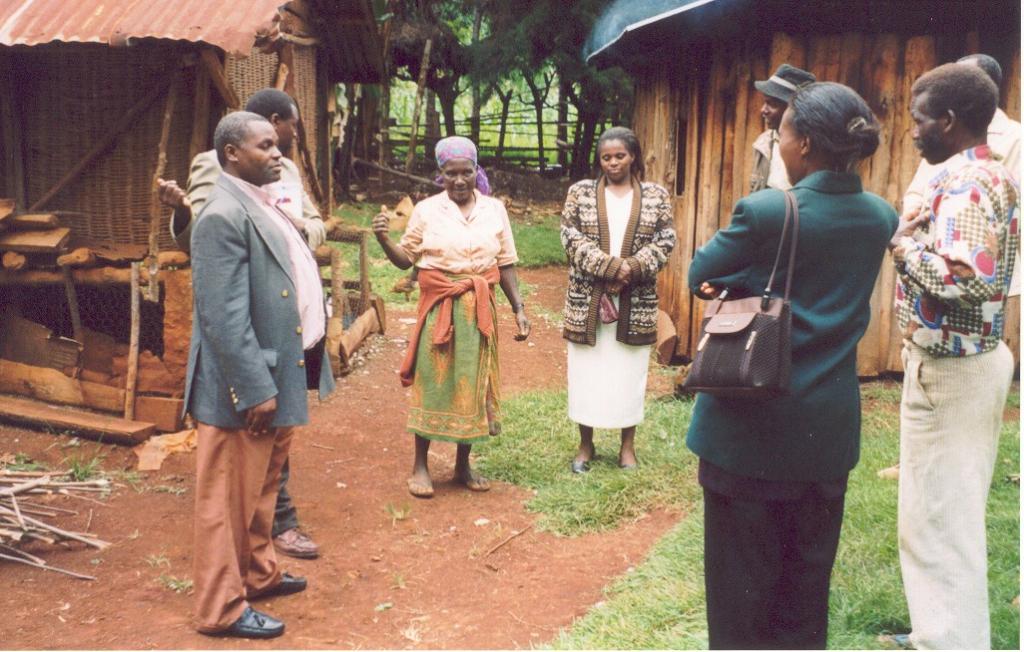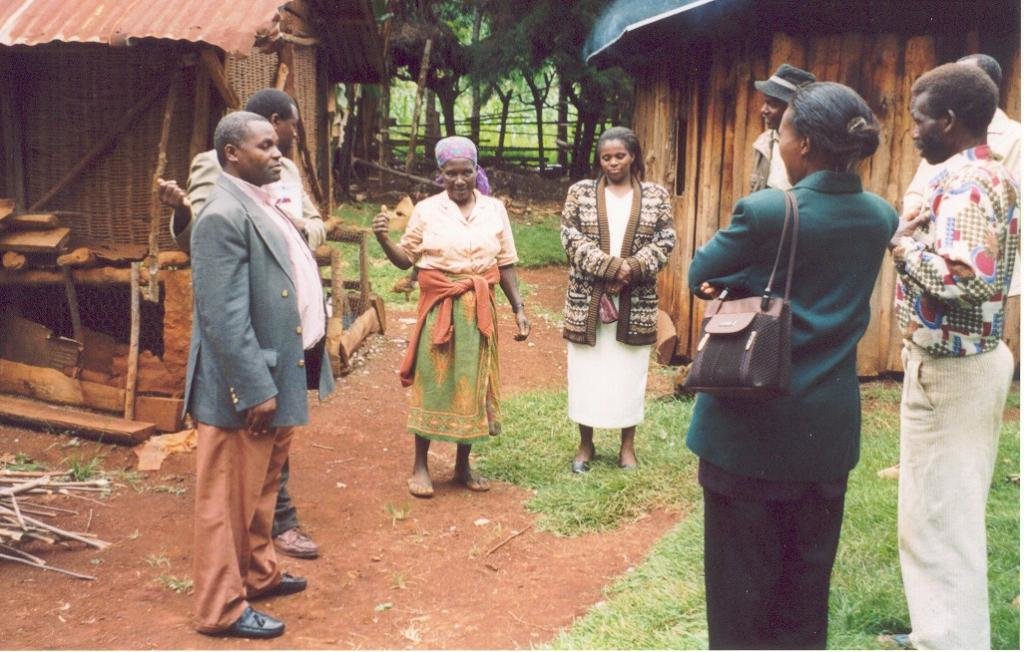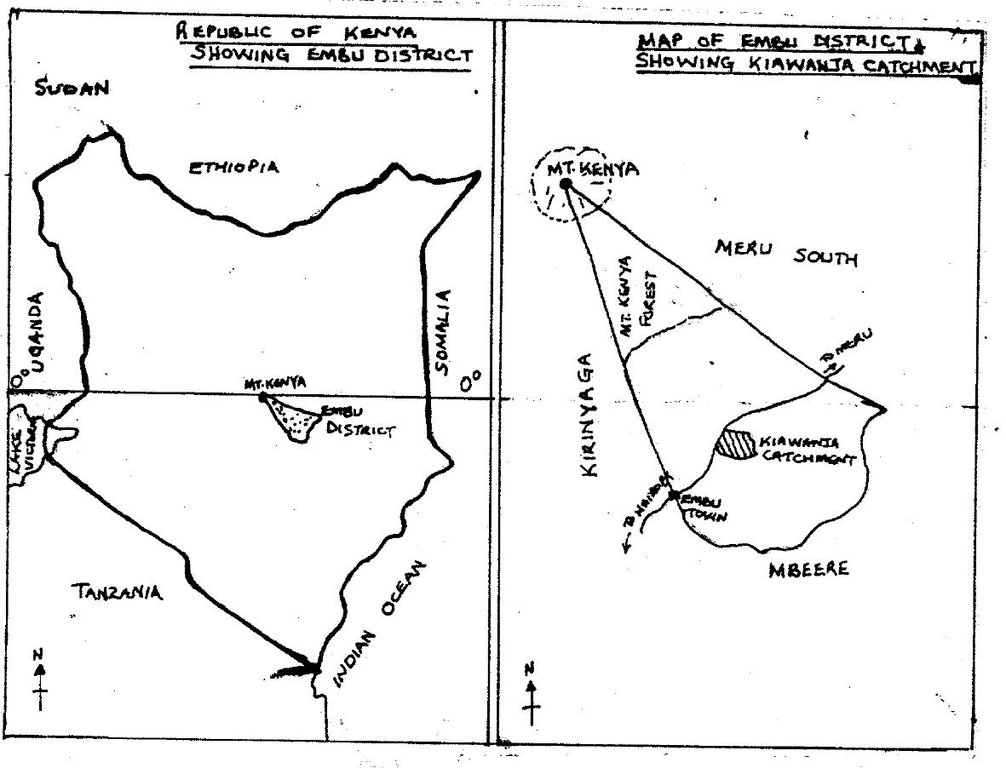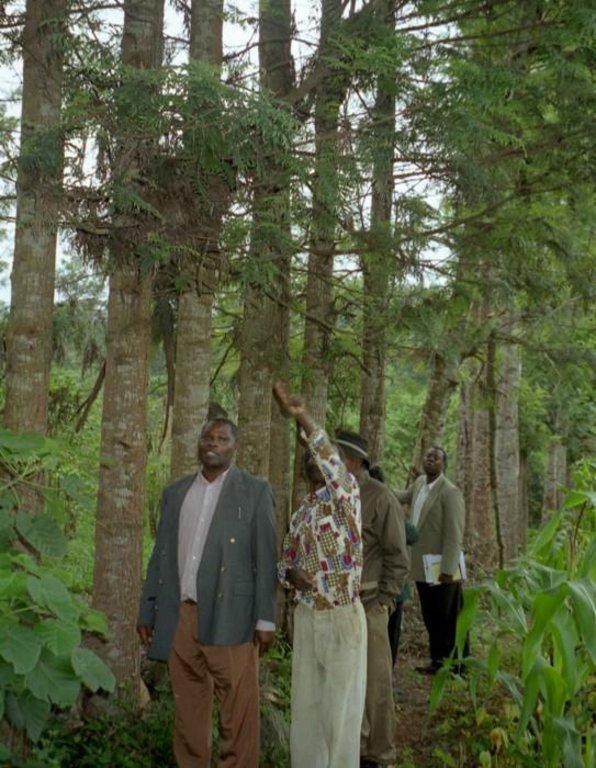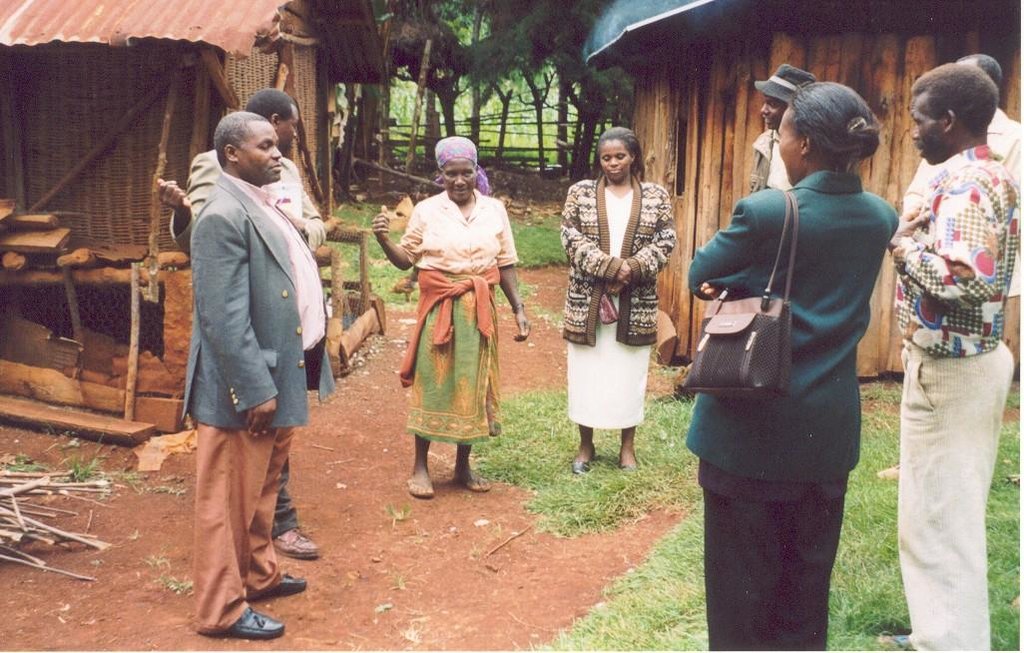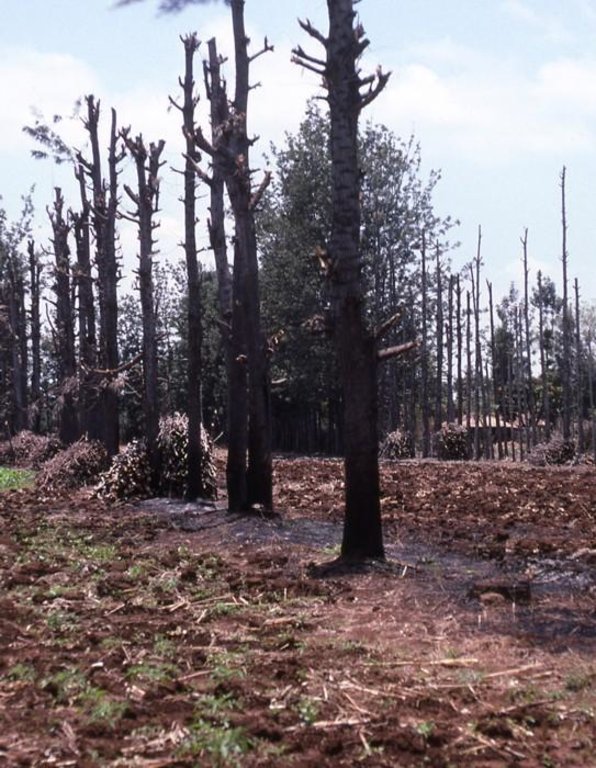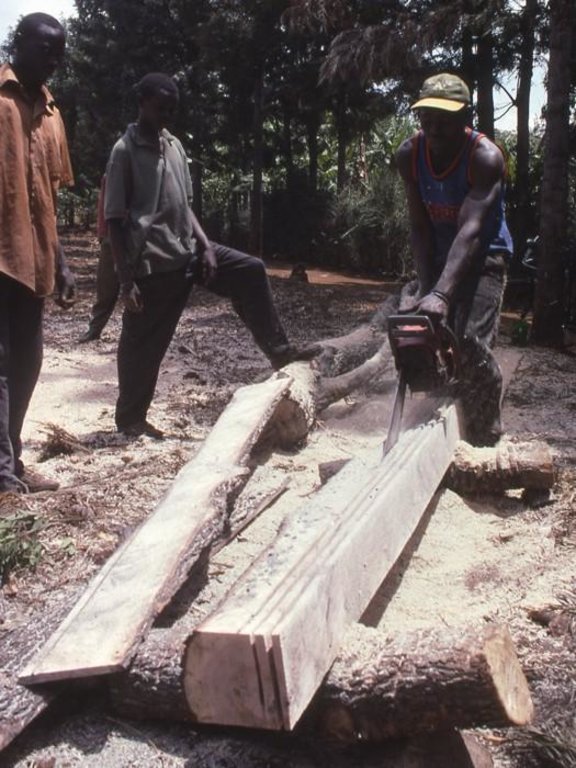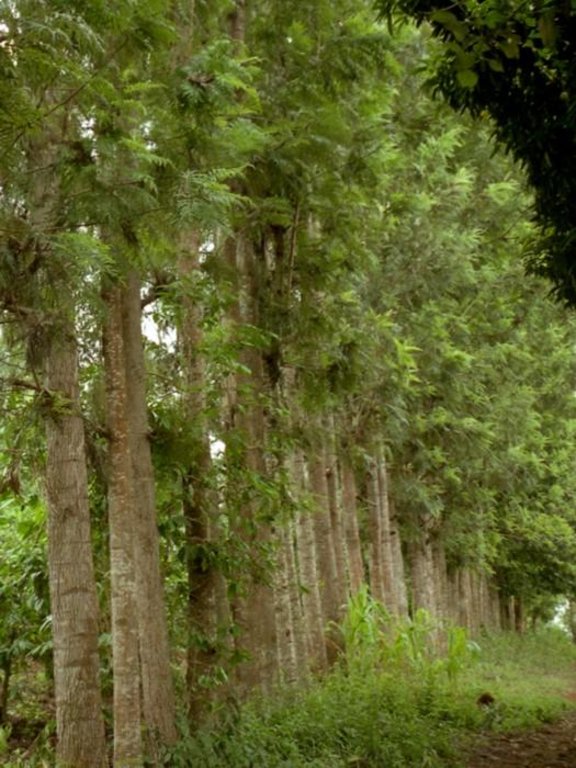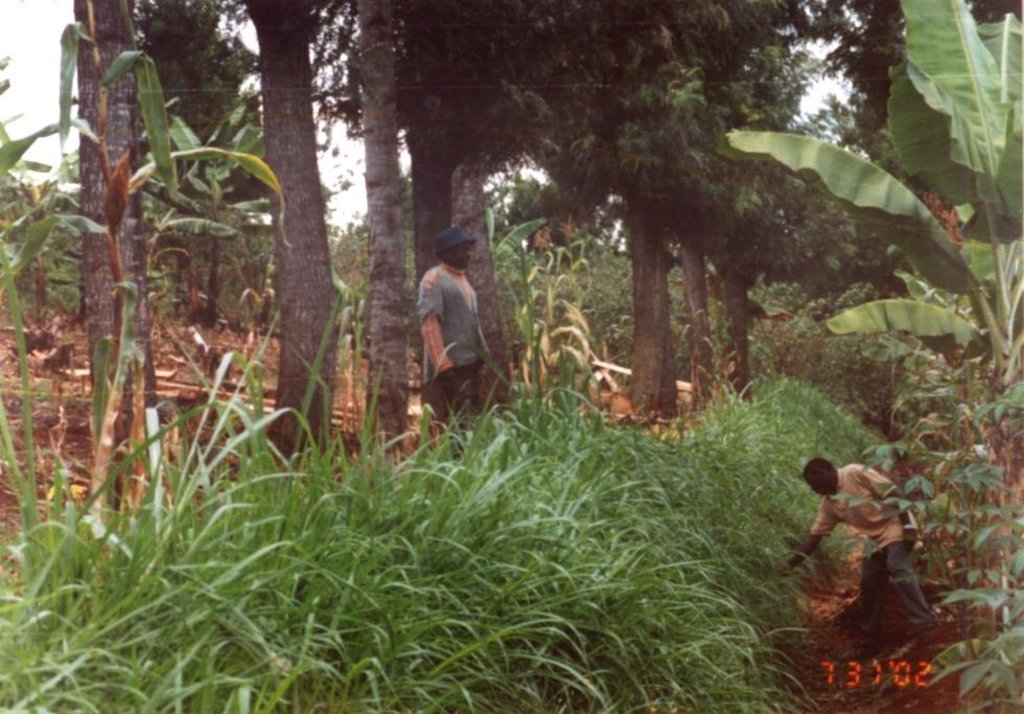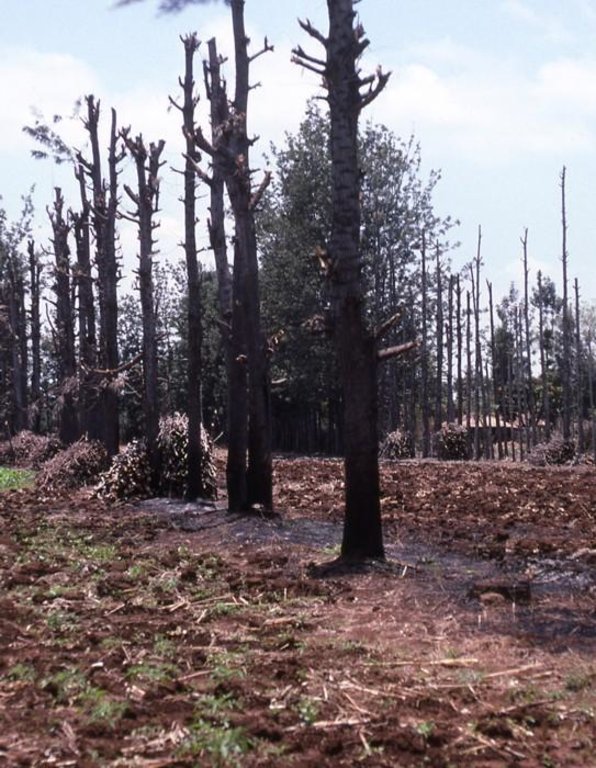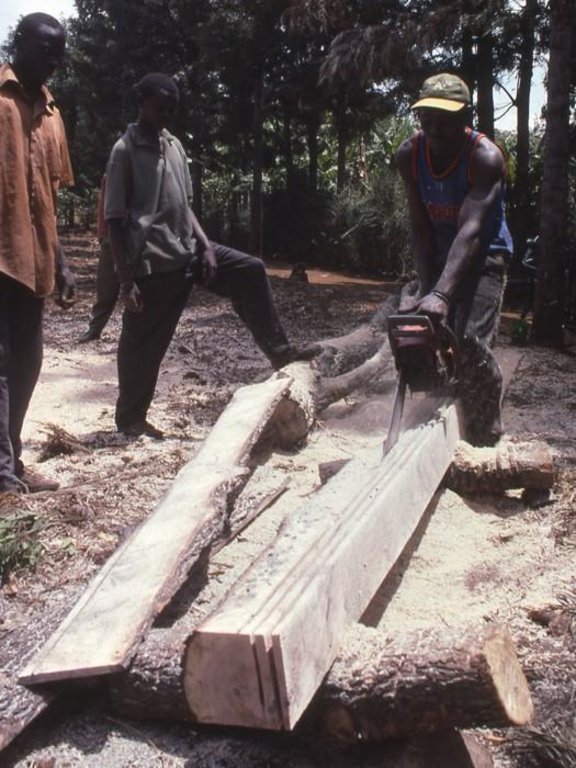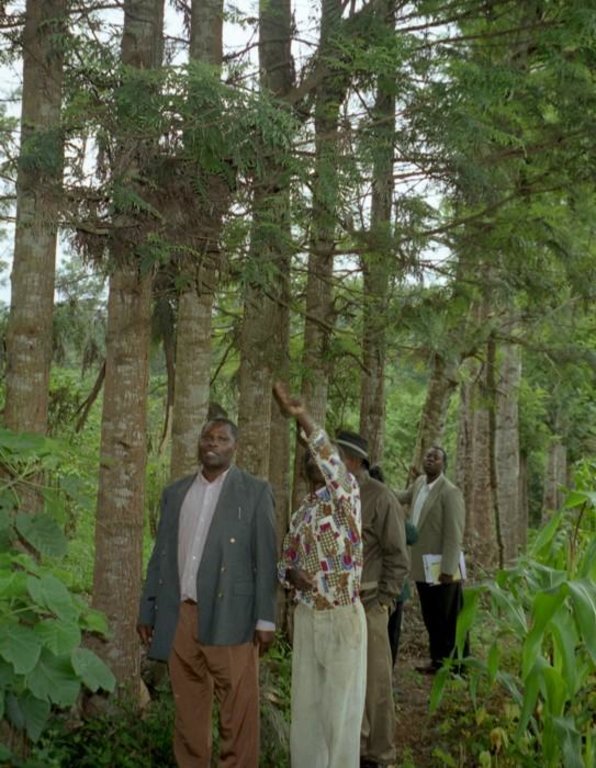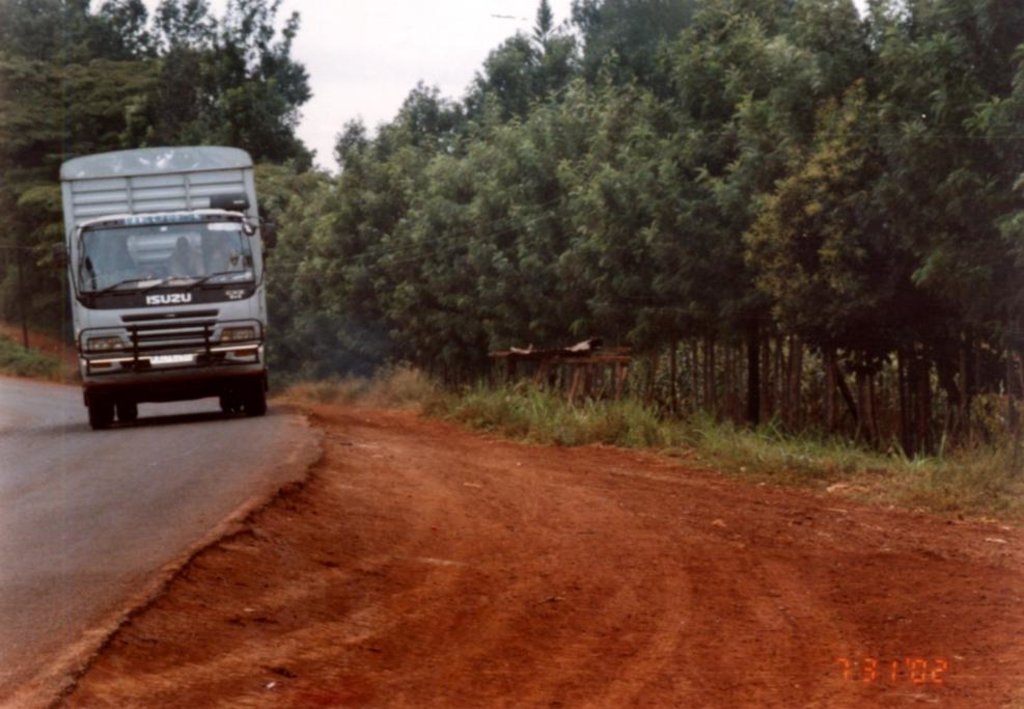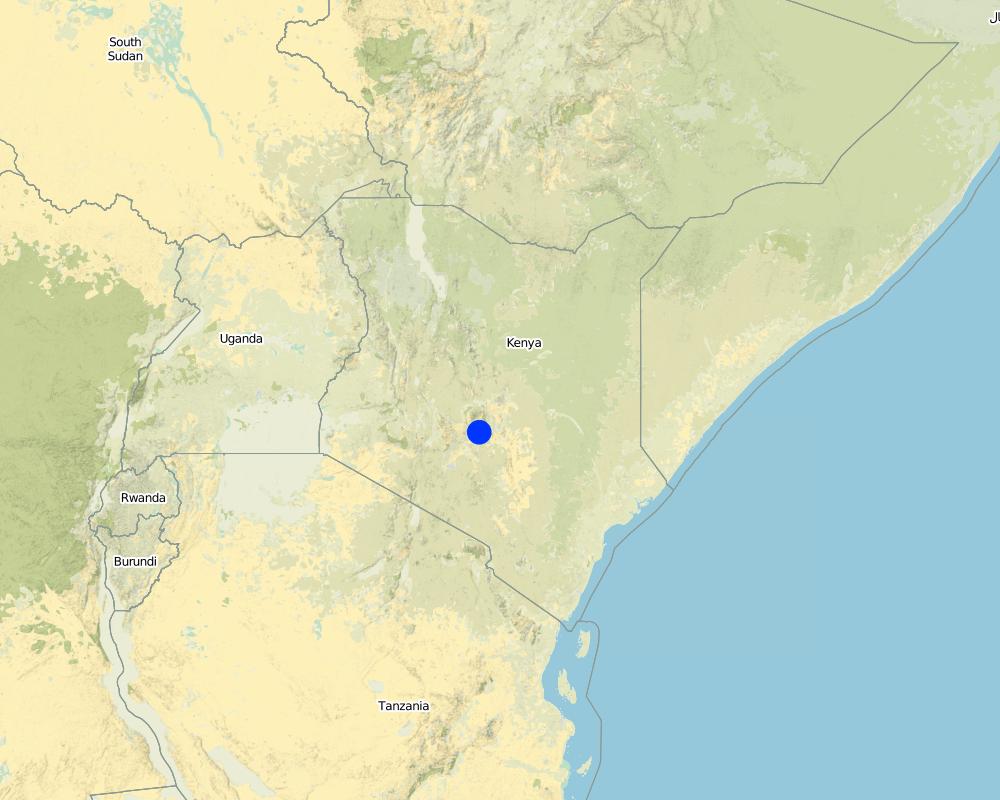Spontaneous spread [Кения]
- Создание:
- Обновить:
- Составитель: Ceris A. Jones
- Редактор: –
- Рецензенты: Fabian Ottiger, Deborah Niggli
approaches_2627 - Кения
Просмотреть разделы
Развернуть все Свернуть все1. Общая информация
1.2 Контактные данные специалистов и организаций, участвующих в описании и оценке Подхода
Специалист по УЗП:
Mwaniki JM
mwanikijm2002@yahoo.com
Ministry of Agriculture/Soil and Water Conservation Branch
Embu
Кения
Специалист по УЗП:
Название проекта, содействовавшего документированию/оценке Подхода (если применимо)
Book project: where the land is greener - Case Studies and Analysis of Soil and Water Conservation Initiatives Worldwide (where the land is greener)Название организации (-ий), содействовавших документированию/оценке Подхода (если применимо)
Ministry of Agriculture, Livestock and Fisheries (MoA) - КенияНазвание организации (-ий), содействовавших документированию/оценке Подхода (если применимо)
Swiss Agency for Development and Cooperation (DEZA / COSUDE / DDC / SDC) - ШвейцарияНазвание организации (-ий), содействовавших документированию/оценке Подхода (если применимо)
Agronomica - Великобритания1.3 Условия, регламентирующие использование собранных ВОКАТ данных
Составитель и ответственный/-ые специалист(-ы) согласны с условиями, регламентирующими использование собранных ВОКАТ данных:
Да
1.4 Ссылка (-и) на Анкету (-ы) по Технологиям УЗП
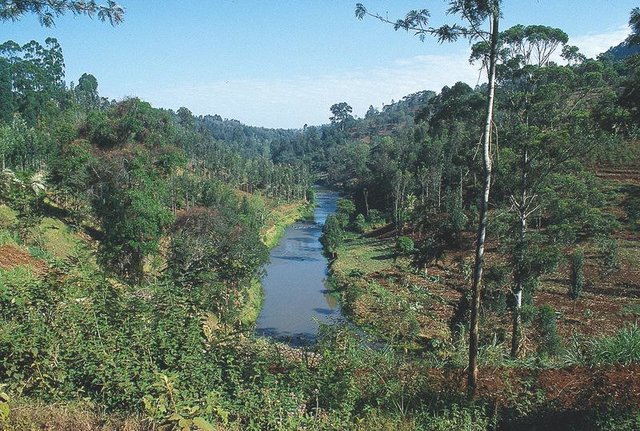
Système agroforestier à Grevillea [Кения]
Les arbres de Grevillea robusta à usage multiples sont plantés le long les limites des champs, sur les talus des terraces et des fois dispersés dans les champs.
- Составитель: Ceris A. Jones
2. Описание Подхода УЗП
2.1 Краткое описание Подхода
Spontaneous land users' initiative to meet household needs - especially firewood and timber - through planting Grevillea robusta trees as part of an agroforestry system.
2.2 Подробное описание Подхода
Подробное описание Подхода:
Aims / objectives: Grevillea robusta is a well-known shade tree, used in coffee and tea plantations in East Africa since the early part of the 20th century. While it originates from Australia, it was brought over from India and Sri Lanka by European settlers. Smallholder farmers in the highlands of Kenya noted that there was little or no competition between grevillea and neighbouring crops. Indeed this is one of the reasons it was so successful as a shade tree amongst plantation crops. Responding to the local lack of timber and firewood, due to the expansion of farmland into previously forested areas, smallholders took to planting grevillea, especially as a boundary tree, from the 1970s onwards. While the immediate effect of grevillea planting was to satisfy those needs for wood, the tree also helps in various ways to conserve land and improve the soil. This too was probably a reason for its spontaneous spread.
Methods: Because planting of grevillea requires few resources other than tools, even poor land users can readily adopt the technology. Although seedlings can be bought from local Government, NGO or private nurseries, it is also possible to collect ‘wildings’ (naturally generated seedlings) and plant these at minimal cost. The management of grevillea trees, once established, is important to their performance in the field, but the skills of thinning, and pollarding (pruning side branches for use) can be easily learned from neighbours. The success of the spontaneous spread of grevillea, basically through farmer-to-farmer exchange of knowledge, demonstrates that tree planting is not something that has always to be ‘pushed’ by outside agencies. Where smallholders perceive a need for trees and tree products - and an appropriate species is available - they will respond positively. However there is still an important ‘pulling’ role to be played by the Ministry of Agriculture’s extension agents and NGOs, especially through support for tree nurseries and for training to establish private tree nurseries.
2.3 Фотографии, иллюстрирующие Подход
2.5 Страна/ регион/ место, где применялся Подход
Страна:
Кения
Административная единица (Район/Область):
Eastern Province
Map
×2.6 Даты начала и окончания реализации Подхода
Год начала реализации:
1971
2.7 Тип Подхода
- традиционная/ местная система землепользования, используемая коренным населением
2.8 Каковы цели/ задачи Подхода
The Approach focused mainly on other activities than SLM (Fencing, farm boundary marking, ornamental value, fuel wood supply, building materials provision)
- improve availability of tree products (fuelwood and wood for construction). - demarcate own land easily and cheaply (after land registration). - reduce land degradation. - increase land productivity. - improve household income
The SLM Approach addressed the following problems: - shortage of fuelwood and building materials, environmental degradation. - need for farm boundary marking. - lack of simple, widely applicable agroforestry recommendations
2.9 Условия содействующие применению Технологии/ Технологий в рамках Подхода или затрудняющие его
Социальные/ культурные/ религиозные нормы и ценности
- затрудняют
Gender bias - women not expected to plant trees
Treatment through the SLM Approach: Although not directly related to this approach, intensive campaigns were conducted (by government and NGO's) to encourage gender balance with respect to tree planting
Наличие/ доступность финансовых ресурсов и услуг
- затрудняют
Shortage of tree seedlings and sourced from long distance
Treatment through the SLM Approach: Setting up of individual on-farm tree nurseries and collection of wildlings
Нормативно-правовая база (землевладение, права на земле- и водопользование)
- содействуют
The existing land ownership, land use rights / water rights greatly helped the approach implementation: Private land ownership has given farmers confidence to invest the land, and has also been a direct stimulus through the need to mark plot boundaries
Осведомленность в области УЗП, доступность технической поддержки
- затрудняют
Shortage of tree seedlings and sourced from long distance
Treatment through the SLM Approach: Setting up of individual on-farm tree nurseries and collection of wildlings.
3. Участие и распределение ролей заинтересованных сторон
3.1 Заинтересованные стороны, участвующие в реализации Подхода и их роли
- местные землепользователи/ местные сообщества
Working land users were mainly men (It was traditionally the role of men to plant trees. This is however changing ie other groups - women and youth - are now planting trees.)
Land users identified, purchased and planted their species of choice. However, at the same time, Grevillea seedlings were available at institutional (Ministry of Environment and Natural Resources) nurseries.
Traditionally men purchased, collected and planted trees. The men had greater access to and control of decisions on planting. The technology requires few resources, so that even poor land users have easily been able to decide to buy seedlings or collect wildlings and plant
3.2 Участие местных землепользователей/ местных сообществ на разных стадиях реализации Подхода
| Участие местных землепользователей/ местных сообществ | Перечислите участников и опишите их вовлеченность | |
|---|---|---|
| инициирование/ мотивация | самоорганизация | innovative individuals planting grevillea |
| планирование | самоорганизация | informal, individual plans |
| выполнение | самоорганизация | |
| мониторинг/ оценка | пассивное | ad hoc observations by MoA; |
| Research | нет | no activities |
3.4 Принятие решений по выбору Технологии/ Технологий УЗП
Укажите, кто принимал решение по выбору применяемой Технологии/ Технологий:
- исключительно землепользователи (по собственной инициативе)
Поясните:
Land user-driven initiative by shortages/problems
Decisions on the method of implementing the SLM Technology were made by by land users* alone (self-initiative / bottom-up). The land user decided on when and how to plant the trees.
4. Техническая поддержка, повышение компетенций и управление знаниями
4.1 Повышение компетенций/ обучение
Проводилось ли обучение землепользователей/ других заинтересованных лиц?
Да
Рассматриваемые темы:
Some demonstrations of benefits of tree planting by Government at provincial agricultural shows.
4.2 Консультационные услуги
Есть ли у землепользователей возможность получать консультации?
Да
Укажите, где именно оказываются консультационные услуги:
- на полях землепользователей
Описание/ комментарий:
Key elements: Informal farmer-to-farmer exchange of ideas and skills. Additionally, on national tree planting days, the government hands out seedlings. Grevillea planting has been encouraged during national campaigns (involving the Ministry of Agriculture, the Ministry of Environment and Natural Resources, and NGOs) to encourage soil and w; 1) Advisory service was carried out through: other: individual land users 2) Advisory service was carried out through: other: individual land users
Advisory service is quite adequate to ensure the continuation of land conservation activities; There is collaboration between Government extension service and KARI (Kenya Agricultural Research Institute) to further promote the technology
4.3 Институциональная (организационная) поддержка
В ходе реализации Подхода были ли организованы новые институциональные структуры или поддержаны уже существующие?
- нет
4.4 Мониторинг и оценка
Являются ли мониторинг и оценка частью Подхода?
Да
Комментарии:
technical aspects were ad hoc
economic / production aspects were ad hoc
area treated aspects were ad hoc monitored by 0 through observations; indicators: None
There were no changes in the Approach as a result of monitoring and evaluation: None
5. Финансирование и внешняя материальная поддержка
5.1 Годовой бюджет мероприятий по УЗП в рамках Подхода
Комментарий (например, основные источники финансирования/ ключевые доноры):
Approach costs were met by the following donors: government (national - Sponsored national tree planting days): 10.0%; other (Individual land user): 90.0%
5.2 Финансирование и внешняя материальная поддержка, предоставляемая землепользователям
Предоставлялась ли землепользователям финансовая/ материальная поддержка для применения Технологии /Технологий?
Нет
5.3 Субсидии на отдельные затраты (включая оплату труда)
- сельскохозяйственные
| Укажите, какие ресурсы были субсидированы | В какой степени | Опишите субсидии подробнее |
|---|---|---|
| семена | профинансированы частично | Individual land user. However, labour input was minimal |
Если труд землепользователя был существенным вкладом, укажите, был ли этот вклад:
- добровольный
Комментарии:
Individual land user. However, labour input was minimal
5.4 Кредитование
Предоставлялись ли в рамках Подхода кредиты на мероприятия УЗП?
Нет
6. Анализ влияния и заключительные положения
6.1 Влияние Подхода
Сумел ли Подход помочь землепользователям внедрить и поддерживать технологии УЗП?
- Нет
- Да, немного
- Да, умеренно
- Да, существенно
better soil and water management, increase in soil organic matter levels, nutrient pumping and reduced soil erosion.
Did other land users / projects adopt the Approach?
- Нет
- Да, немного
- Да, умеренно
- Да, существенно
Other extension programmes are utilising individual initiative as an entry point
6.3 Долгосрочная устойчивость мероприятий в рамках Подхода
Могут ли землепользователи самостоятельно (без внешней поддержки) продолжать применение того, что было реализовано в рамках Подхода?
- да
Если да, опишите как:
As land users developed this approach they can continue activities without support.
6.4 Сильные стороны/ преимущества Подхода
| Сильные стороны/ преимущества/ возможности по мнению землепользователей |
|---|
| Strong land user 'ownership' of the approach. |
| Adaptability, flexibilityand simplicity since it is user driven |
| Сильные стороны/ преимущества/ возможности по мнению составителя или других ключевых специалистов |
|---|
| Incentives not necessary |
| Valuable lessons from a farmer-driven success for development agencies that promote tree planting and agroforestry systems. |
| Very low inputs (resources) required. However there is still an important 'pulling' role to be played by the Ministry of Agriculture's extension agents and NGOs (How to sustain/ enhance this strength: More support for individual and government tree nurseries.) |
| Self-driven initiative (How to sustain/ enhance this strength: MoA extension staff and land users to encourage other farmers to be self-reliant.) |
6.5 Слабые стороны/ недостатки Подхода и пути их преодоления
| Слабые стороны/ недостатки/ риски по мнению землепользователей | Возможные пути их преодоления/снижения? |
|---|---|
| Lack of other stakeholders input | Encourage and inform land users on where to seek additional information consultations with SWC extensionists |
| Слабые стороны/ недостатки/ риски по мнению составителя или ответственных специалистов | Возможные пути их преодоления/снижения? |
|---|---|
| Adoption rates under such approaches depend on the number and efforts of innovators to stimulate others | SWC extensionists (Ministry and NGOs) to undertake more community mobilisation and awareness raising. |
| Approach is dependent on social cohesiveness for dissemination | promote more farmer interaction at community level |
| Poor collaboration and insitutional linkages | Encourage and create forums where stakeholders can share experiences and inform land users about where to seek additional information and assistance. |
7. Справочные материалы и ссылки
7.1 Методы сбора/источники информации
- выезды на места, полевые обследования
- опросы землепользователей
7.2 Ссылки на опубликованные материалы
Название, автор, год публикации, ISBN:
NjiruN.N et al. 1998. PRA report of Kiawanja catchmentSee 'Grevillea agroforestry system' case study (QT KEN16) for technical references
Где опубликовано? Стоимость?
Nembure district
Ссылки и модули
Развернуть все Свернуть всеСсылки

Système agroforestier à Grevillea [Кения]
Les arbres de Grevillea robusta à usage multiples sont plantés le long les limites des champs, sur les talus des terraces et des fois dispersés dans les champs.
- Составитель: Ceris A. Jones
Модули
Нет модулей


